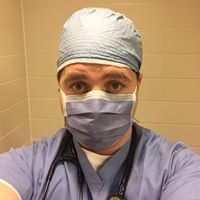-
Posts
1,157 -
Joined
-
Last visited
-
Days Won
11
Content Type
Profiles
Articles
Forums
Gallery
Downloads
Store
Everything posted by WolfmanHarris
-
In Julia's own words "Cancer update: latest MRI results The tumor is "stable". this means it has stayed the same size from the last MRI, (where it had come down some) and swelling has come down a small amount. Not the kind of results that have me dancing, but it certainly not bad! I'm keeping on with Chemo for now. I've been on Chemo for a year, and most aren't on this type of Chemo for more than 6 months, but i'v...e had no problem staying on it longer. Now we'll be deciding each month if I...
-
Carter's eating habits constantly surprise me. Tried sautéed red peppers left over from dinner and he loved them. I was eating Korean short ribs and he wanted to try them. He ended up eating about a quarter of them. No bland kids food for him.
-
So the floor in the family room had developed mysterious slippery spot. We couldn't figure out why we'd suddenly slip when walking in the room. Turns out my foam roller polishes the crap out of the floor.
-
So busy today they needed me to leave CME to save the day! Well they needed volunteers or they'd choose lowest seniority to go, but that still counts. You're welcome.
-
Good thing we rushed out and did groceries so we could come back to a house with no power and order in.
-
Went a little Thai crazy tonight. Made yellow currie w/ cauliflower "rice", chicken satay and almond chili sauce. All turned out really well!
-
Trying something to curb procrastination. I'm deleting the Facebook app to see how it affects my time management. Not quitting FB, but I won't be on as much.
-
Just learned the actor who played Stringer Bell on "The Wire" and Charles on "The Office" is English. Never would have guessed. BTW the BBC show "Luther" is really good.
-
Curry is a surprisingly forgiving dish. Start off making an almond butter satay sauce and realize you're missing an ingredient? Cook up some chicken, sautée some veggies, dump the failed sauce on top and dinner is served. Curry paste and chili sauce cover all mistakes.
-
Big cooking night around here. Julia made sausage, tomato, bean soup and I made a big pot of beef stew. Fridge well stocked.
-
Just when I think I'm starting to get good at cooking... Tonight's disappointing dinner comes to knock me down a peg or two.
-
2012 was simultaneously the best and worst year of my life thus far. I look back with mixed emotions and look forward with hope. May 2013 bury the ghosts of 2012.
-
On a day I didn't pack a lunch I would get stuck on offload at the only hospital without a cafeteria.
-
Mark and I went snowshoeing today. Had a blast, played with a pellet gun, now relaxing by the fire.



